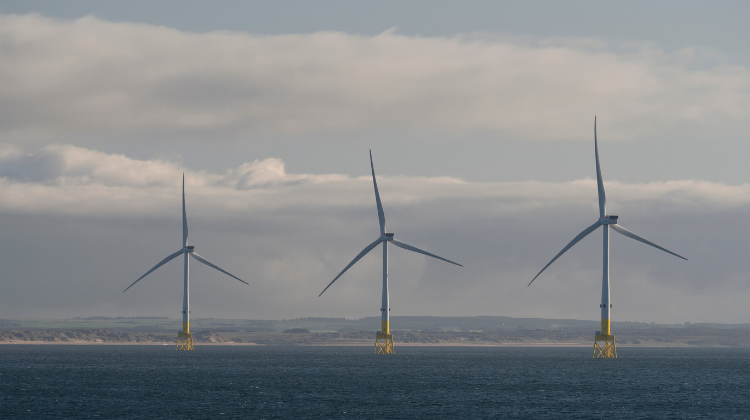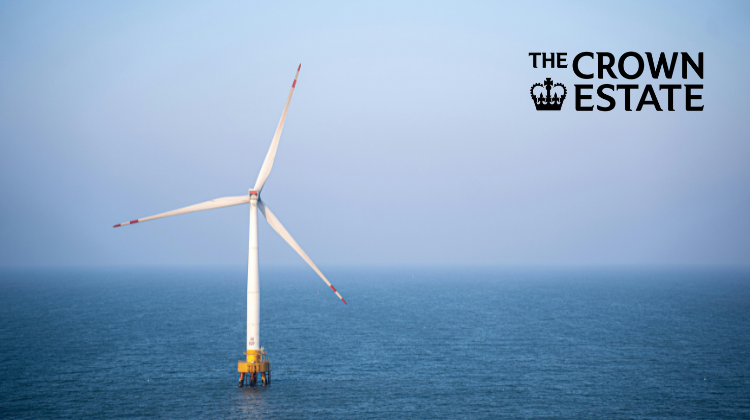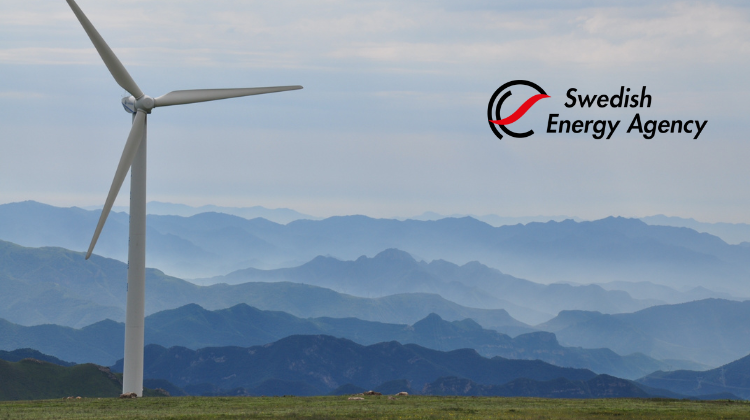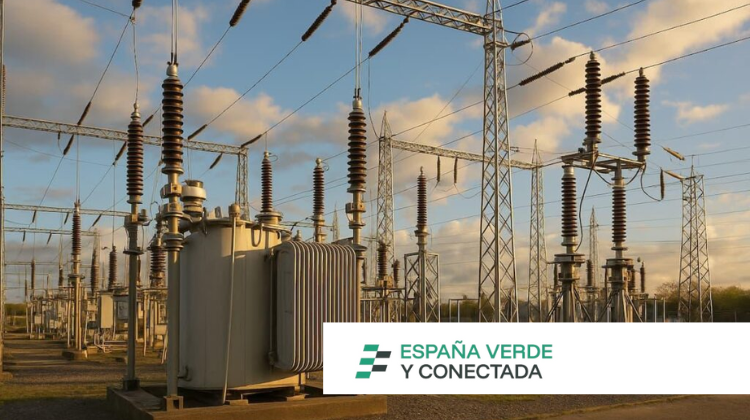According to the analysis of the Commission, the targeted modifications do not affect the relevance, effectiveness, efficiency and coherence of their recovery and resilience plans.


According to the analysis of the Commission, the targeted modifications do not affect the relevance, effectiveness, efficiency and coherence of their recovery and resilience plans.

This is a comprehensive reform of the German electricity tariff structure, prioritizing efficient infrastructure financing, the integration of renewable energy, and the inclusion of new players such as prosumers. The proposal seeks to correct existing distortions and lay the foundations for a sustainable tariff system by 2045.

According to a new report commissioned by Highlands and Islands Enterprise, Scotland’s offshore wind sector holds an investment potential of over £40 billion, with the region positioned to become the country’s main development hub and a key job creator through to 2040.

The Iberdrola subsidiary has secured a key financing package to modernise the British electricity grid, enable greater integration of renewables, and support the government’s Clean Power 2030 plan.

Crown Estate Scotland plans up to 30GW of offshore wind capacity with a strong emphasis on floating technology and port development. “Enabling commercial-scale floating wind is one of our top priorities,” states Ranald Leask, a senior executive at the public body, in a conversation with Strategic Energy Europe.

With the potential to generate up to 120 GW of offshore wind power and store 78 billion tonnes of CO₂, the UK-Norway alliance strengthens Europe’s energy security, opens investment opportunities, and promises the creation of up to 51,000 clean energy jobs.

The UK is making a decisive leap in its clean energy transition as The Crown Estate launches its Capacity Increase Programme, adding 4.7 GW of renewable capacity across seven offshore wind farms. This initiative will supply clean energy to up to four million homes, while enhancing energy security and supporting the country’s decarbonisation goals.

Germany closed 2024 with over 100 GW of installed photovoltaic capacity and two million batteries in operation. Strategic Energy Europe attended the 2025 edition of Intersolar Europe, where BSW-Solar presented this progress as part of a roadmap to double capacity by 2030.

According to the Swedish Energy Agency, electricity production will increase by 15% by 2028, driven by wind and nuclear power. Despite geopolitical tensions and economic uncertainty, industrial demand is set to rise by 25%, primarily due to green hydrogen projects.

The new plan outlines strategies to boost hydrogen uptake across transport, industry, and power generation, with clear targets for 2030, £11 billion in private investment, and alignment with the UK’s net zero ambitions.

Electrical engineer Nayeem Hossain analyzes the progress of marine renewable energy, from offshore wind to tidal power and hybrid solutions. He asserts that, although the market is still developing, the potential is “immense” and could transform the European electricity system.

The Department for Energy Security & Net Zero has confirmed regulatory changes to the Contracts for Difference (CfD) scheme ahead of Allocation Round 7 (AR7), including later publication of the budget, expanded access to anonymised bid data for the Secretary of State, and integration of the Clean Industry Bonus into Ofgem’s price cap.

With more than 30,000 installed projects, Otovo is consolidating its presence in ten countries and accelerating the adoption of technologies such as energy storage and electric mobility, supported by its subscription model that facilitates access to solar systems with no initial investment, according to Manuel Pina in an interview with Strategic Energy Europe.

The German Solar Industry Association announced that the country has reached two million operational solar storage systems, with an installed capacity exceeding 20 GWh. “Now is the time to further accelerate the pace of storage expansion,” states Carsten Körnig, Managing Director of BSW-Solar.

Minister Darragh O’Brien has announced the launch of the National Designated Maritime Area Plan (DMAP), aimed at centralising offshore renewable energy planning and providing certainty for the sector to meet the 2040 target of 20 GW. “This maximises our financial, human and time resources,” states the Minister.

This critical five-year investment period to 2033 will help unlock unprecedented investment to expand access to clean and affordable power in towns, cities and communities across Great Britain.

The company will present its products and celebrate its 20th anniversary at Intersolar Europe 2025. In an exclusive interview, Solis outlines its next steps.

Faced with an electricity system increasingly dominated by renewable energy and inverters, the United Kingdom is redefining its approach to system recovery after major blackouts. The strategy now includes storage, regional restart pathways and a decentralised infrastructure, as analysed by Dlzar Al Kez, Research Associate at Net Zero Infrastructure, in conversation with Strategic Energy Europe.

The discussions concerned the objectives and values of the European Climate Adaptation Plan, the role of technology in accelerating eco-innovation and the need to involve the private sector in climate action, inter alia.

Despite project cancellations and delays totaling more than $100 billion, the offshore wind industry expects to add nearly 20 GW of energy to operations in the coming months, driving the global energy transition.

This strategic consolidation brings together the Center for Renewable Energy, the university’s LOIiWA spin-off, and the Science and Technology Park, forming a robust platform for collaboration between science and industry in Western Poland and beyond.

According to the analysis of the Commission, the targeted modifications do not affect the relevance, effectiveness, efficiency and coherence of their recovery and resilience plans.

This is a comprehensive reform of the German electricity tariff structure, prioritizing efficient infrastructure financing, the integration of renewable energy, and the inclusion of new players such as prosumers. The proposal seeks to correct existing distortions and lay the foundations for a sustainable tariff system by 2045.

According to a new report commissioned by Highlands and Islands Enterprise, Scotland’s offshore wind sector holds an investment potential of over £40 billion, with the region positioned to become the country’s main development hub and a key job creator through to 2040.

The Iberdrola subsidiary has secured a key financing package to modernise the British electricity grid, enable greater integration of renewables, and support the government’s Clean Power 2030 plan.

Crown Estate Scotland plans up to 30GW of offshore wind capacity with a strong emphasis on floating technology and port development. “Enabling commercial-scale floating wind is one of our top priorities,” states Ranald Leask, a senior executive at the public body, in a conversation with Strategic Energy Europe.

With the potential to generate up to 120 GW of offshore wind power and store 78 billion tonnes of CO₂, the UK-Norway alliance strengthens Europe’s energy security, opens investment opportunities, and promises the creation of up to 51,000 clean energy jobs.

The UK is making a decisive leap in its clean energy transition as The Crown Estate launches its Capacity Increase Programme, adding 4.7 GW of renewable capacity across seven offshore wind farms. This initiative will supply clean energy to up to four million homes, while enhancing energy security and supporting the country’s decarbonisation goals.

Germany closed 2024 with over 100 GW of installed photovoltaic capacity and two million batteries in operation. Strategic Energy Europe attended the 2025 edition of Intersolar Europe, where BSW-Solar presented this progress as part of a roadmap to double capacity by 2030.

According to the Swedish Energy Agency, electricity production will increase by 15% by 2028, driven by wind and nuclear power. Despite geopolitical tensions and economic uncertainty, industrial demand is set to rise by 25%, primarily due to green hydrogen projects.

The new plan outlines strategies to boost hydrogen uptake across transport, industry, and power generation, with clear targets for 2030, £11 billion in private investment, and alignment with the UK’s net zero ambitions.

Electrical engineer Nayeem Hossain analyzes the progress of marine renewable energy, from offshore wind to tidal power and hybrid solutions. He asserts that, although the market is still developing, the potential is “immense” and could transform the European electricity system.

The Department for Energy Security & Net Zero has confirmed regulatory changes to the Contracts for Difference (CfD) scheme ahead of Allocation Round 7 (AR7), including later publication of the budget, expanded access to anonymised bid data for the Secretary of State, and integration of the Clean Industry Bonus into Ofgem’s price cap.

With more than 30,000 installed projects, Otovo is consolidating its presence in ten countries and accelerating the adoption of technologies such as energy storage and electric mobility, supported by its subscription model that facilitates access to solar systems with no initial investment, according to Manuel Pina in an interview with Strategic Energy Europe.

The German Solar Industry Association announced that the country has reached two million operational solar storage systems, with an installed capacity exceeding 20 GWh. “Now is the time to further accelerate the pace of storage expansion,” states Carsten Körnig, Managing Director of BSW-Solar.

Minister Darragh O’Brien has announced the launch of the National Designated Maritime Area Plan (DMAP), aimed at centralising offshore renewable energy planning and providing certainty for the sector to meet the 2040 target of 20 GW. “This maximises our financial, human and time resources,” states the Minister.

This critical five-year investment period to 2033 will help unlock unprecedented investment to expand access to clean and affordable power in towns, cities and communities across Great Britain.

The company will present its products and celebrate its 20th anniversary at Intersolar Europe 2025. In an exclusive interview, Solis outlines its next steps.

Faced with an electricity system increasingly dominated by renewable energy and inverters, the United Kingdom is redefining its approach to system recovery after major blackouts. The strategy now includes storage, regional restart pathways and a decentralised infrastructure, as analysed by Dlzar Al Kez, Research Associate at Net Zero Infrastructure, in conversation with Strategic Energy Europe.

The discussions concerned the objectives and values of the European Climate Adaptation Plan, the role of technology in accelerating eco-innovation and the need to involve the private sector in climate action, inter alia.

Despite project cancellations and delays totaling more than $100 billion, the offshore wind industry expects to add nearly 20 GW of energy to operations in the coming months, driving the global energy transition.

This strategic consolidation brings together the Center for Renewable Energy, the university’s LOIiWA spin-off, and the Science and Technology Park, forming a robust platform for collaboration between science and industry in Western Poland and beyond.

La Sección alerta de las oportunidades desaprovechadas por la falta de subastas y un marco normativo estable y ágil. La I+D+i marina sufrió un grave varapalo al no convalidarse el Real Decreto-ley 7/2025 que facilitaba la tramitación. Las incorporaciones recientes refuerzan una Junta Directiva más diversa y sólida que busca desarrollar las distintas tecnologías que conforman la energía marina en España.

According to industry sources, the regulations proposed by the CNMC for distribution networks could nullify the increased investment announced by the Ministry to address industrial electrification, electric mobility, and housing development. What are the risks?

Según remarcaron desde el sector la regulación propuesta por la CNMC para las redes de distribución puede dejar sin efecto el incremento de inversión anunciado por el Ministerio para atender la electrificación industrial, la movilidad eléctrica y el desarrollo de vivienda. ¿Cuáles son los riesgos?






